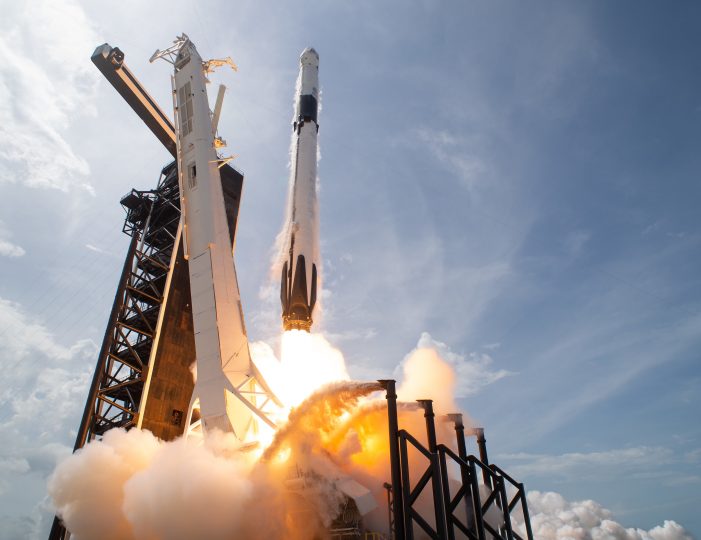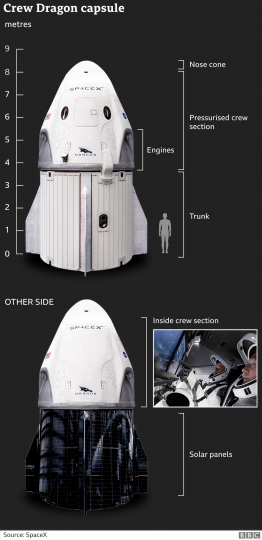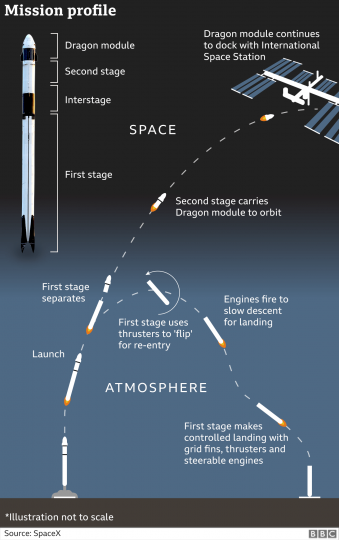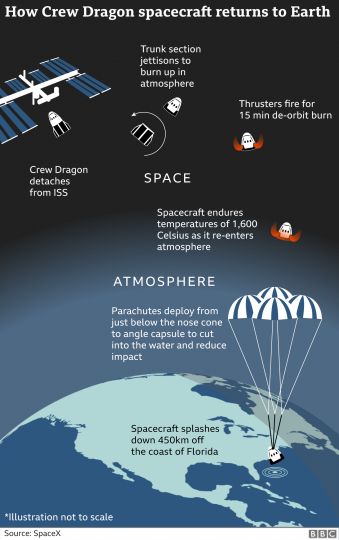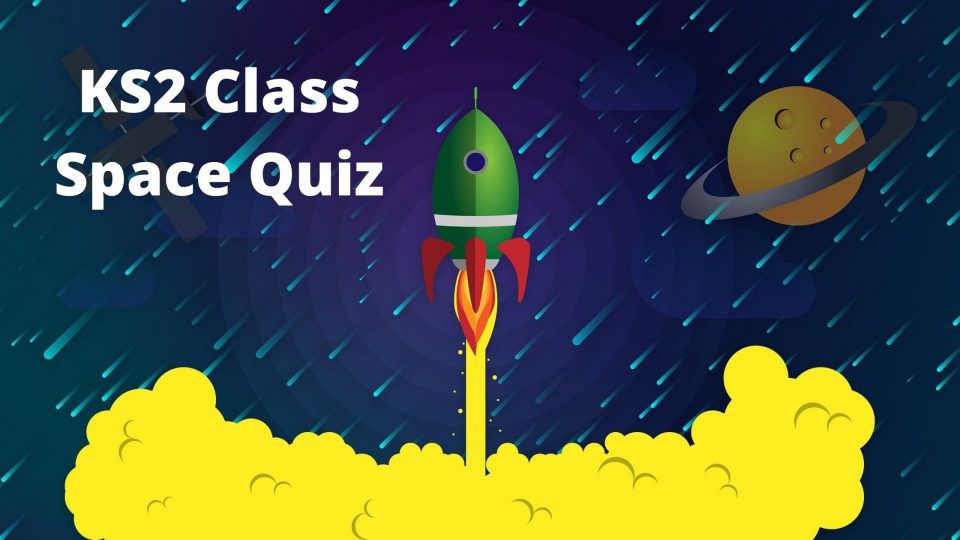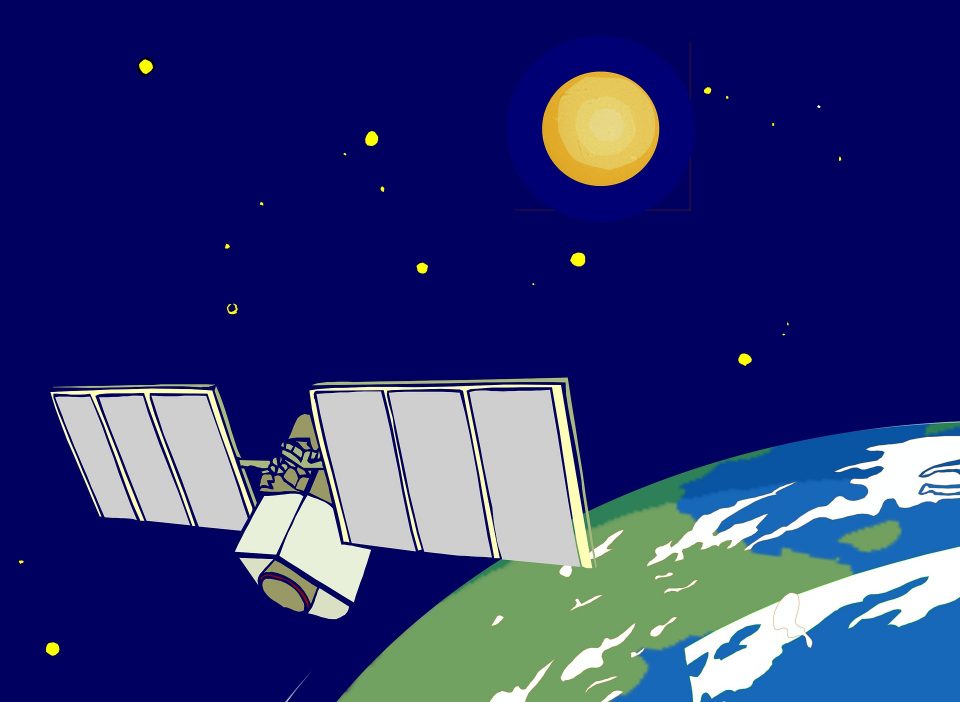Fire in the Sky
Were you lucky enough to see two amazing sights in the UK skies on the night of the 30th May 2020?
- Crew Dragon Launch – 30.05.20
- View of the Earth from the International Space Station
- Makeup of the Crew Dragon Capsule
- Launch stages of the Crew Dragon Spacecraft
- How the Crew Dragon Spacecraft returns to Earth
Seeing the super bright light of the International Space Station whizz across our skies at 17,500km an hour from West to East was special enough…but there was more to come.
A few minutes later, you may have noticed a bright, white dot, moving across the sky from the West, like a satellite. This was the history-making Crew Dragon, successfully launched by American company, SpaceX, from the Kennedy Space Center in Florida.
Elon Musk’s space company flew its first crewed mission (called Demo-2) to send NASA astronauts, Doug Hurley and Bob Behnken to the International Space Station, which they reached 19 hours later.
It was the first time since the last Shuttle launch in 2011 that an American spacecraft has launched from American soil and means that NASA no longer needs to rely on the Russian Soyuz spacecraft to get its astronauts into space.
The two men joined three other astronauts on the International Space Station where they will test and demonstrate the capabilities of Crew while it is docked to the space station.
What kind of Dragon is this?
The Crew Dragon is a version of SpaceX’s Cargo Dragon spacecraft (an unpiloted vehicle that has been making resupply flights to the station for NASA since 2012).
SpaceX’s Crew Dragon will carry up to four astronauts on regular trips to the International Space Station, but the capsule can seat up to seven people.
Fiery Facts
- The Crew Dragon is a class of reusable spacecraft
- The first stage of the SpaceX Falcon 9 rocket will land on the company’s drone ship, “Of Course I Still Love You.” It will be reconditioned and reused.
- It has 16 Draco thrusters and 8 SuperDraco engines
- The crew capsule is 8.1m high and 4m across
- Crew Dragon is a modified version of the original Cargo Dragon, used to take payload to the International Space Station
- The lower half of the Crew Dragon is a cargo bay and covered by solar panels
- The Crew Dragon carries a launch payload of 6000kg
- After a short stay on the ISS, the two astronauts will return to Earth in the Crew Dragon and splash down in the Atlantic Ocean with parachutes.
- This will be the first time astronauts have landed this way since 1975, before the days of the Space Shuttle programme.
Dragons soar to the Moon
The Crew Dragon has proved it can safely transport astronauts to the International Space Station. The next step is for SpaceX to develop a spacecraft for NASA to use in its return to the Moon.
As early as 2024, NASA plans to land the first woman and next man on the moon’s surface as part of the Artemis mission (named because she is the twin sister of Apollo).
In going to the Moon, NASA is laying the foundation that will eventually lead to humans travelling to Mars. The Moon is an ideal place to test technologies and resources that will be needed for long-distance space travel, including building sustainable, reusable structures and refining fuel production.
NASA’s most important development for deep space exploration is the biggest rocket ever built – the Space Launch System (SLS), the Orion spacecraft and the Gateway lunar command module. NASA will use the Gateway lunar command module orbiting the Moon as a staging point for missions that allow astronauts to explore more parts of the lunar surface than ever before.
The European Space Agency (ESA) has its own plans for Moon exploration and aims to build a moon base, where astronauts will live and work.
Could you be part of the next generation of space explorers?
And finally…a question I know you’ll ask…
Yes, the Crew Dragon does have a toilet!


